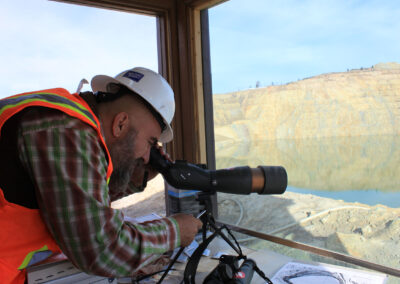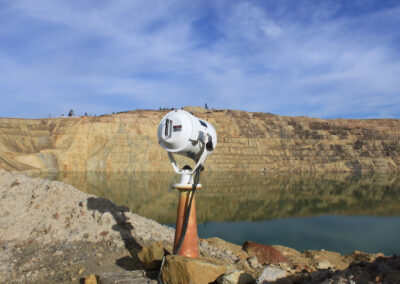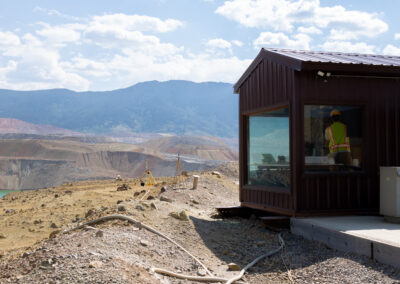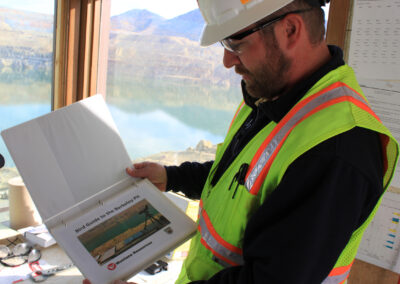Since 1996, Atlantic Richfield and Montana Resources have implemented a rigorous waterfowl protection program at the Berkeley Pit. Over this time the program has adapted and improved methods that deter waterfowl from landing on the Pit and hazing of waterfowl from the Pit’s surface.
Waterfowl protection at the Pit is a truly unique challenge. In addition to its large size (over 430 acres), the Pit has potential for rock slides, has limited access to the shorelines, is subject to harshly cold winters, and can be blanketed in dense fog. The Pit is located within the direct flyway of Butte’s Bert Mooney Airport and within an active mining operation. These compounding conditions and issues must be balanced to maintain program effectiveness while ensuring that workers’ safety is never compromised. Despite these challenges, the waterfowl protection program has effectively encouraged more than 99.8% of all waterfowl landing on the pit to fly away safely.
Who manages the waterfowl protection program?
The waterfowl protection program is a collaborative effort between Atlantic Richfield, Montana Resources, the Environmental Protection Agency, United States Fish and Wildlife Service, and the Montana Department of Environmental Quality. The program relies on an independent Waterfowl Advisory Board of avian experts, conservationists, and partners AR, MR, EPA, MDEQ, and US Fish and Wildlife Service. The group of experts is facilitated by Butte’s local university Montana Tech.
Looking through one of several high powered scopes located within the Bird Mitigation Station at Montana Resources.
Searchlight located near the Montana Resources Bird Mitigation Station. The searchlight is used to facilitate night-time observations of the Berkeley Pit. Photo by Kayla Lappin, CFWEP.
Exterior of the Bird Mitigation Station, also known as the “Bird Shack”, that overlooks the Berkeley Pit.
How does the program work?
Research and Collaboration
Migration occurs in both the spring and the fall. The spring season typically occurs between March 1st and May 31st and the fall season typically occurs between August 15th and November 30th. During migration periods, the Advisory Board team continuously tracks waterfowl migration activity, weather patterns, and other environmental factors like forest fires or drought hundreds of miles north and south of Butte. Local birding experts survey waterfowl activity on water bodies in the Upper Clark Fork basin, much closer to the Pit. This information is gathered to understand current activity within the region and when coupled with broader data prepares the team for prevention activities.
Application of Technology Onsite
Deterring waterfowl can be species specific – what may work for one may not work for another. The Waterfowl Protection Program personnel are trained by professionals in waterfowl identification. Using powerful scopes and binoculars allow staff to perform accurate species identification of birds frequenting the Pit. The species is documented and depending on the confirmed waterfowl species, personnel can select specific methods that are most appropriate for the conditions and most likely to successfully encourage the birds to fly away. Examples of technologies used in this process include lasers, drones (both aerial and on-the-water vehicles), spotlights, pyrotechnics, and firearms. Automated propane cannons and special sirens also provide passive measures to keep birds from landing on the Pit’s surface.
Scientists evaluate the data collected from the site in tandem with regional observations and data to continuously adapt and improve the program’s effectiveness year after year.




